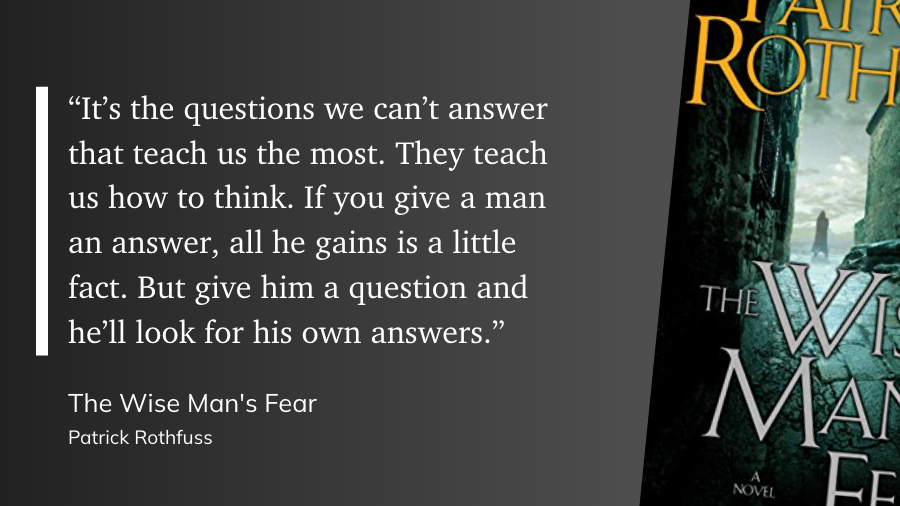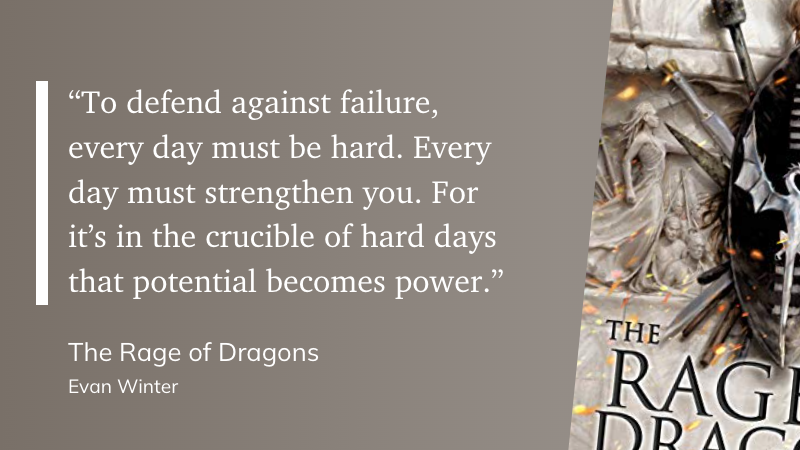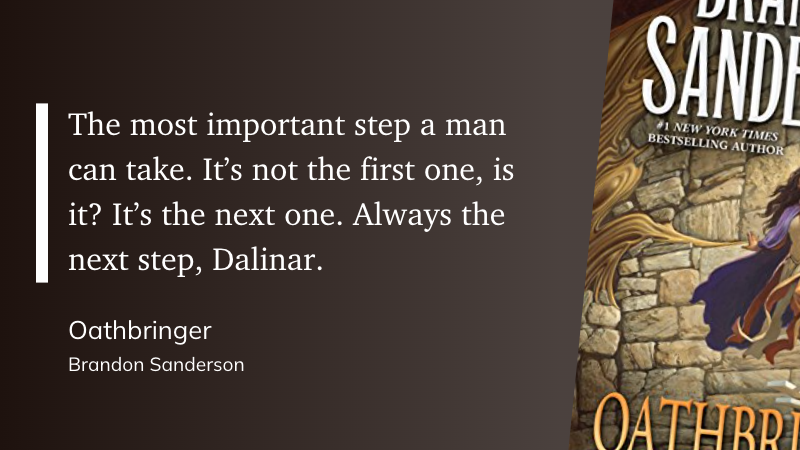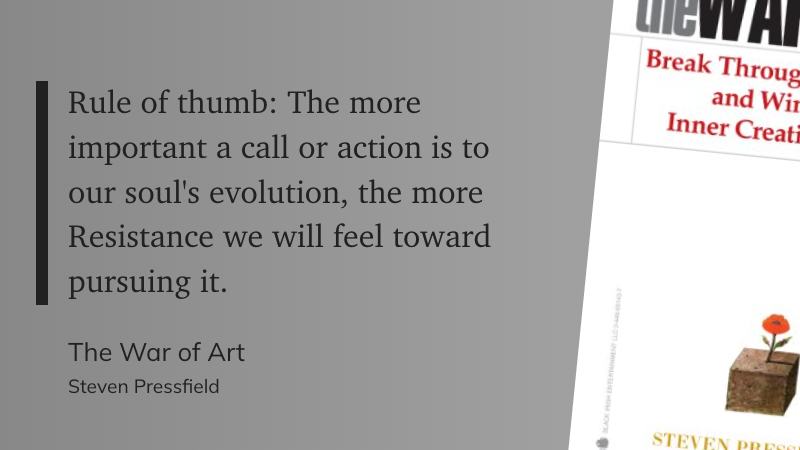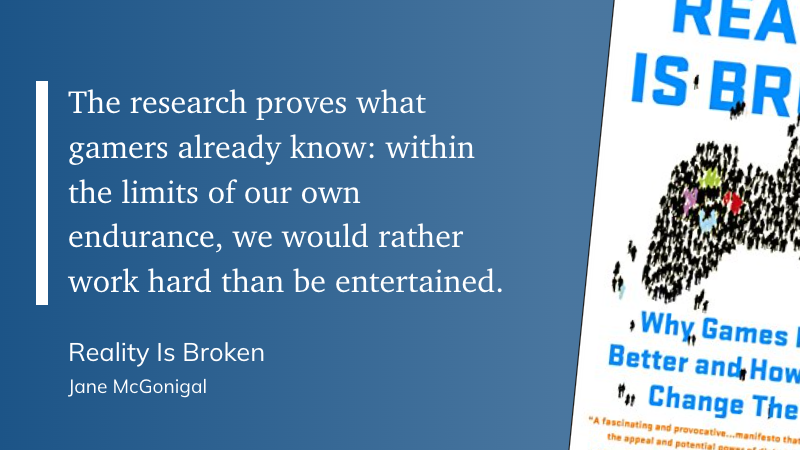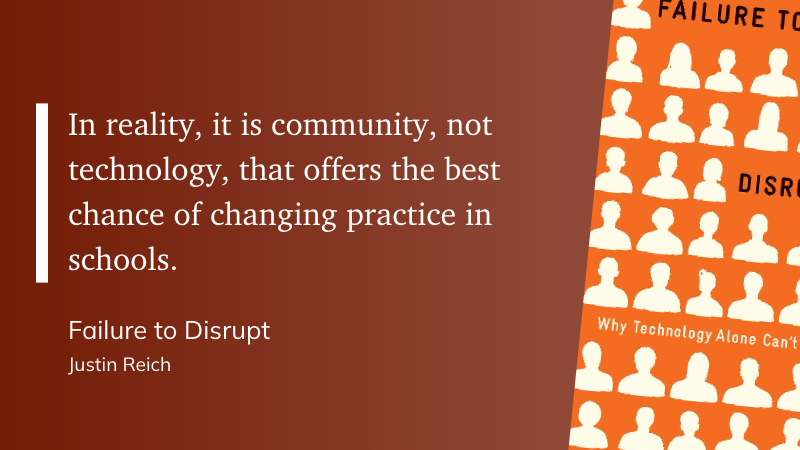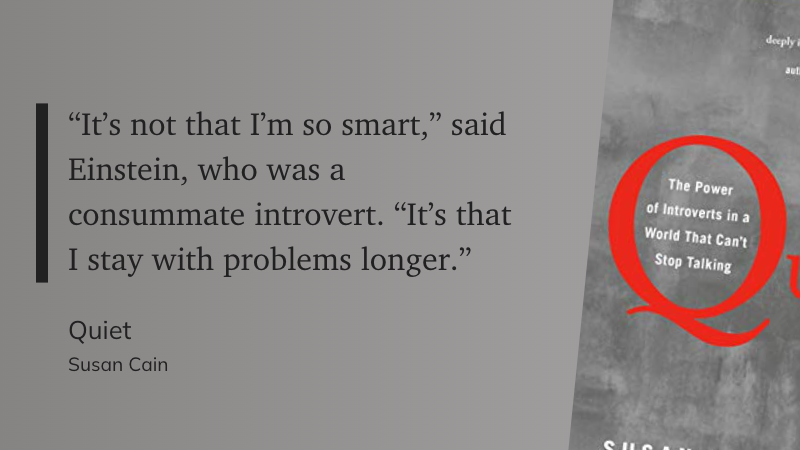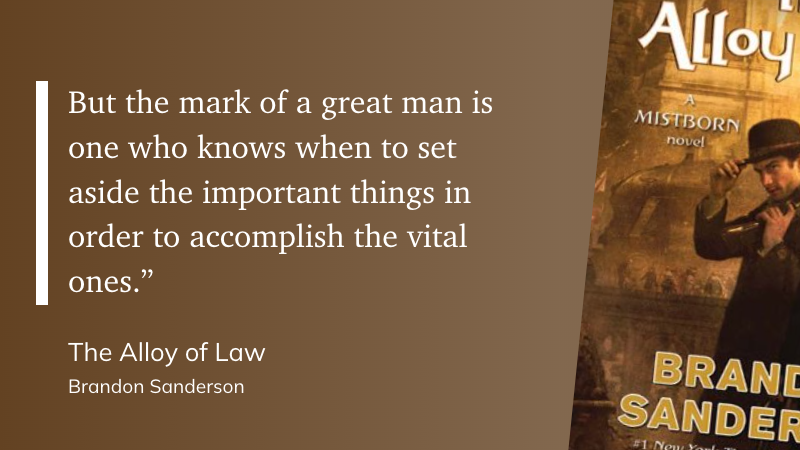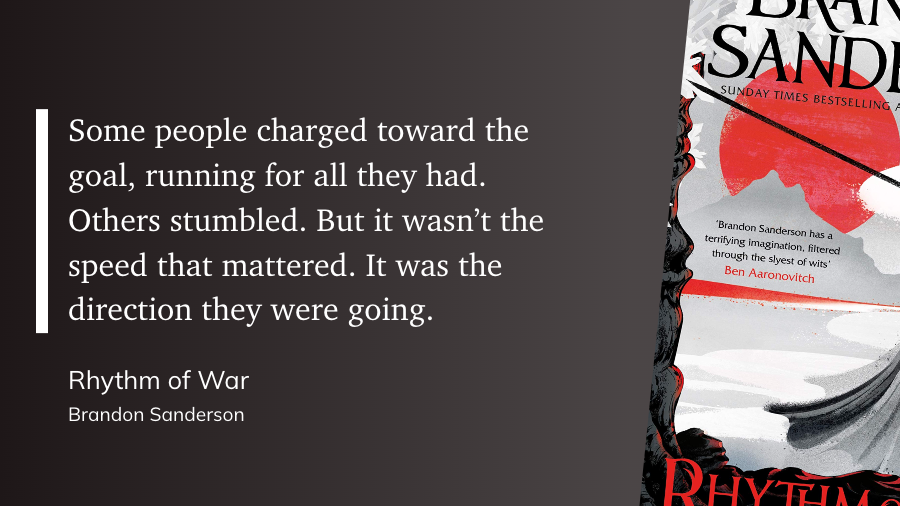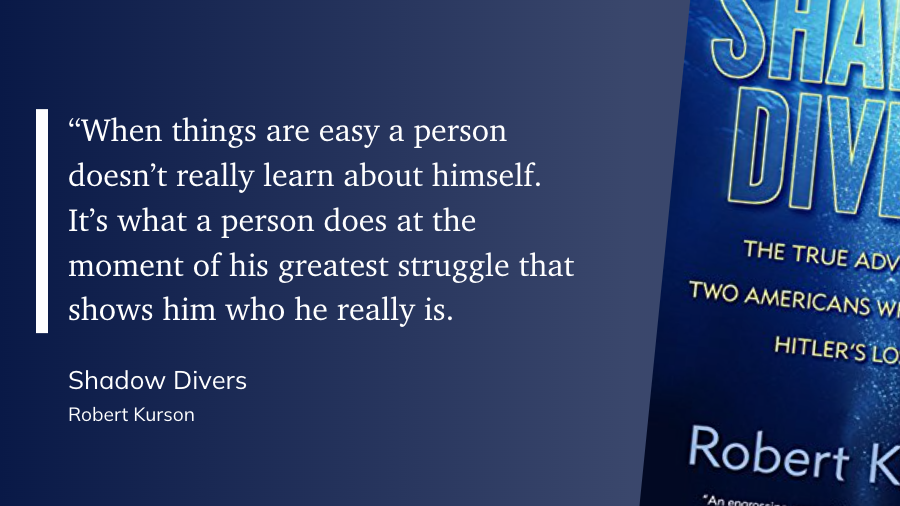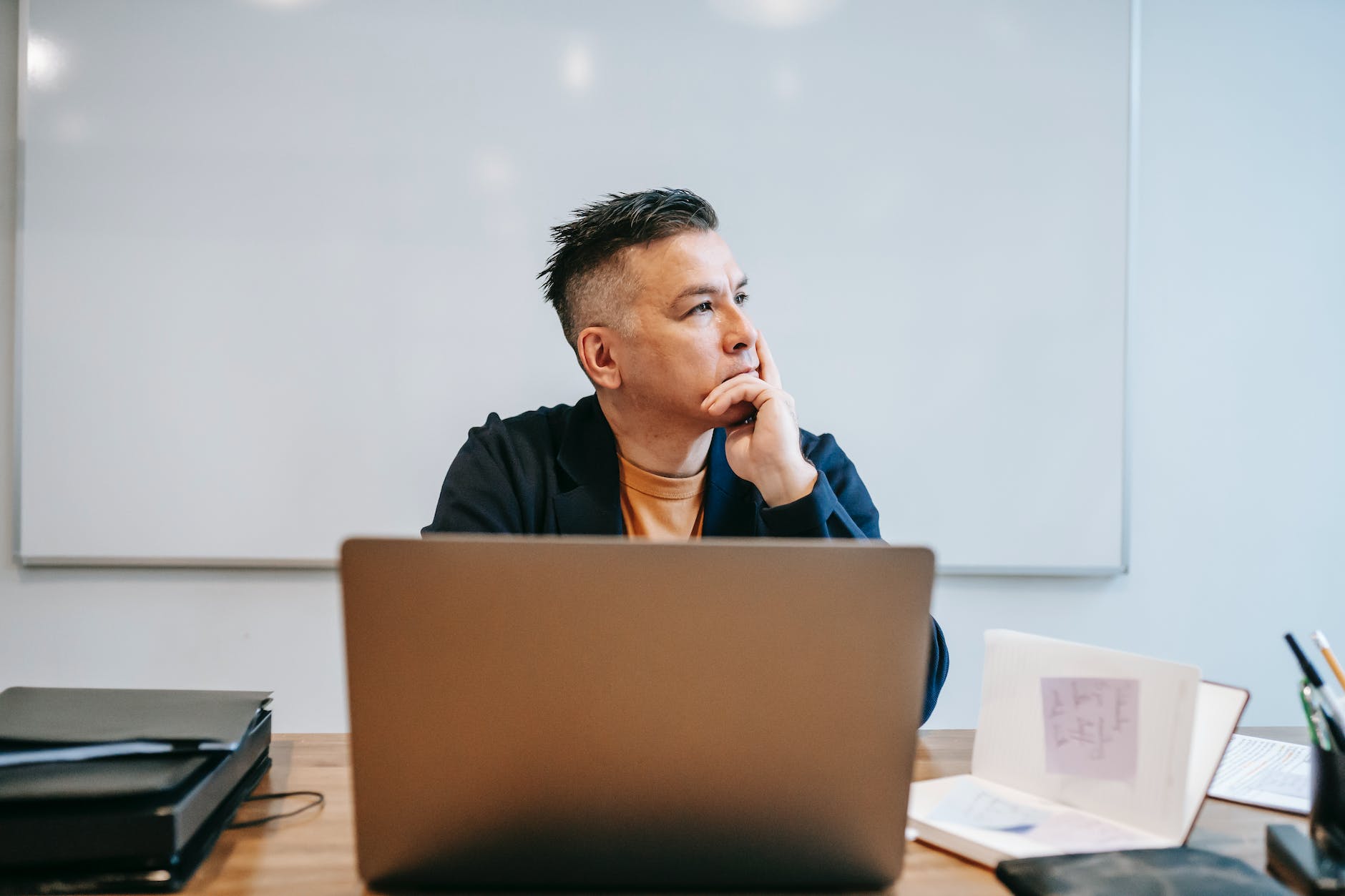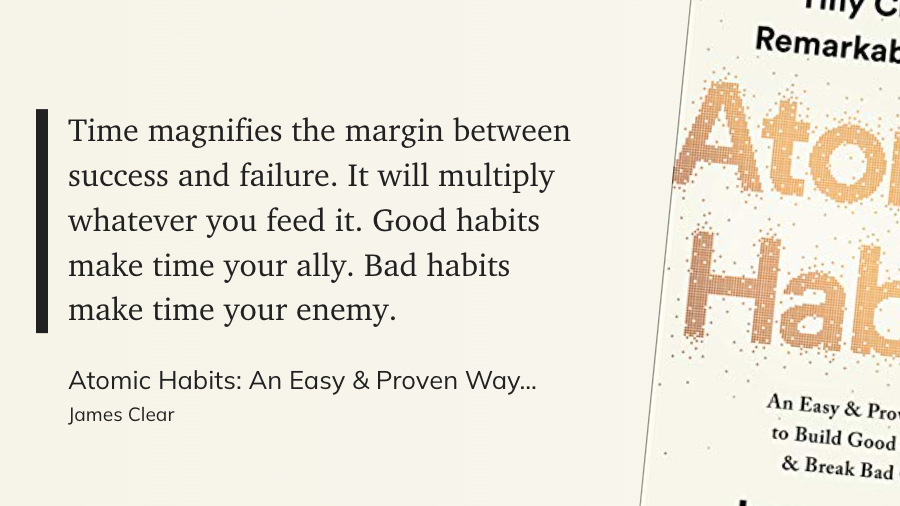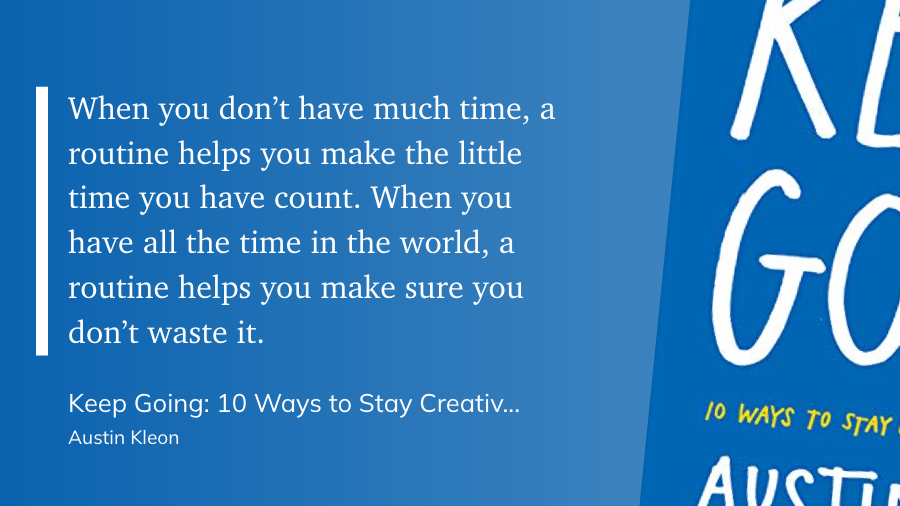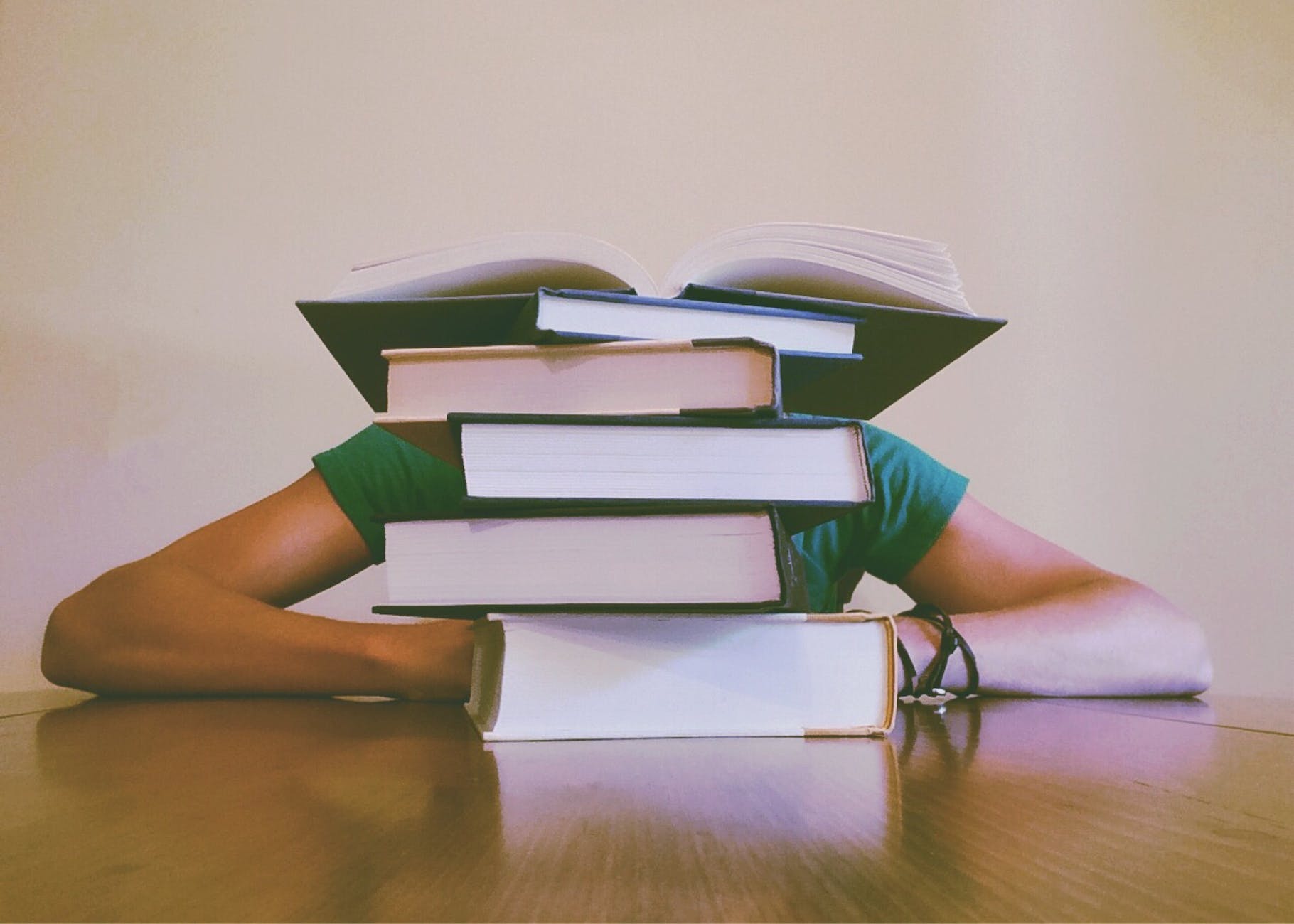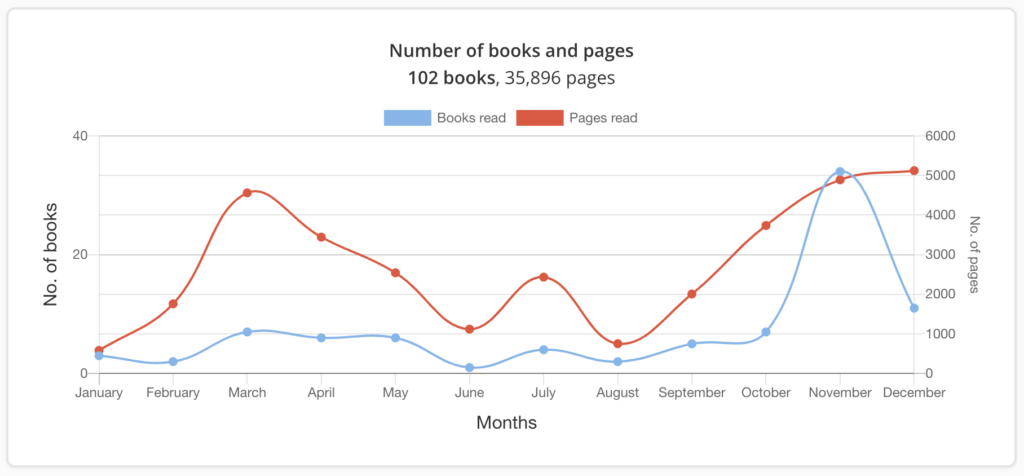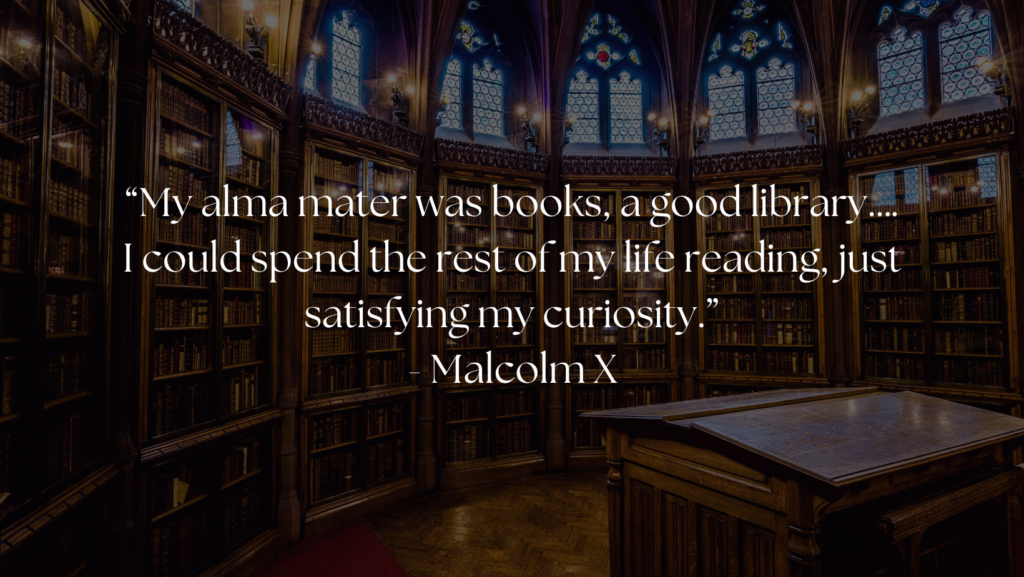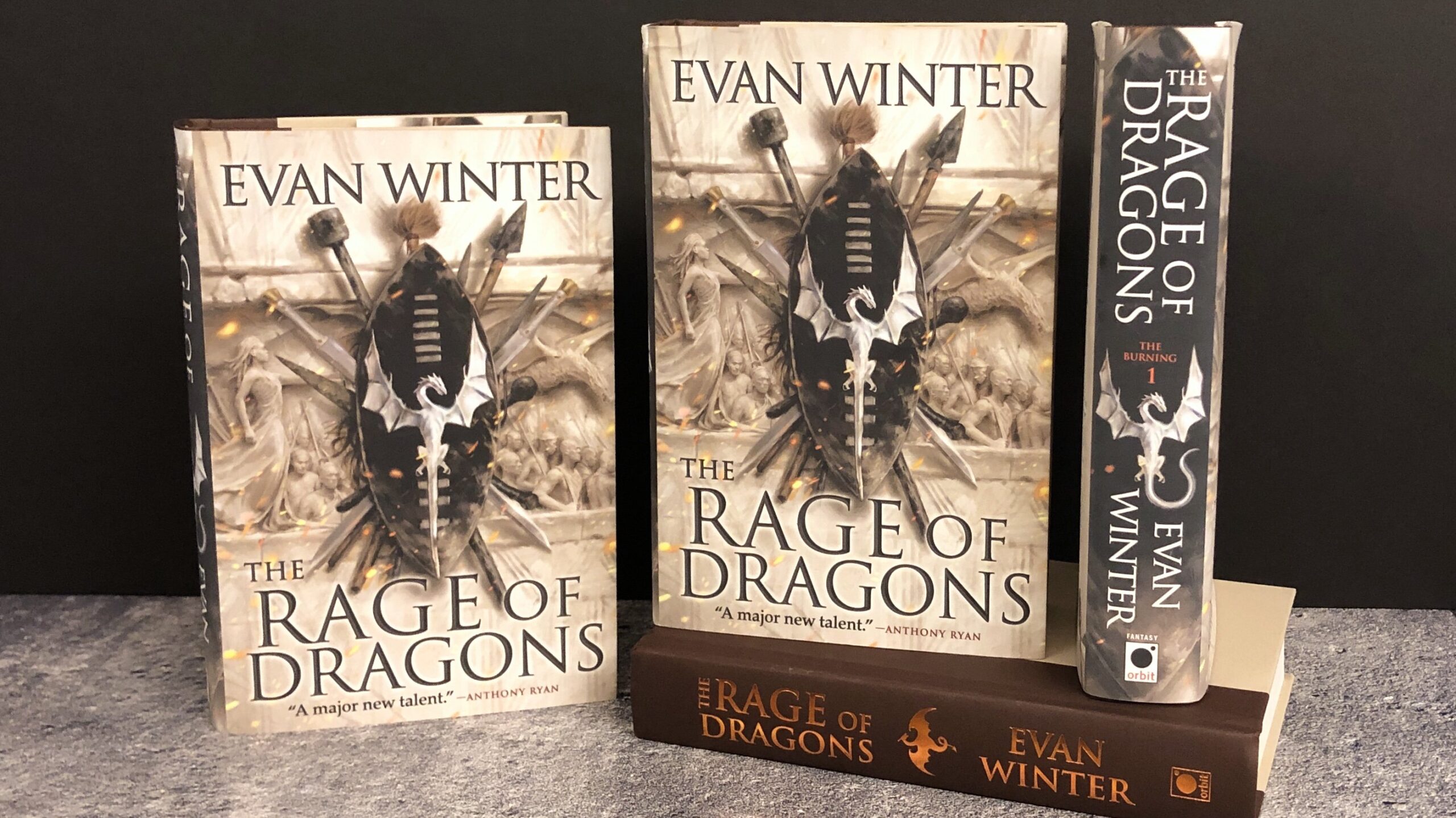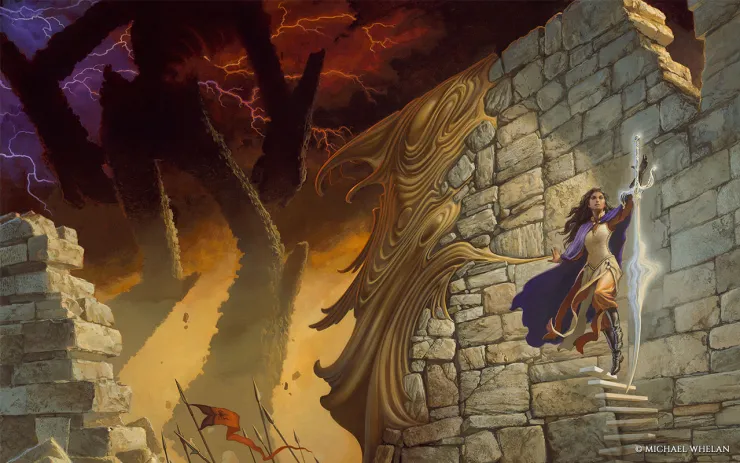Ah, friends. It is time that I gave you my impressions on my first book of 2023. This is one I’ve been both excited to get and hesitant to read. Why? Back in March 2022, Brandon Sanderson revealed he’d written five extra books in his spare time during the height of the COVID-19 pandemic. He released four of them on Kickstarter, leading to the biggest Kickstarter in history ($42 million worth of awesome).
While there were some sneak peaks from Sanderson in the months leading up to the release of the projects, I stayed away from them. I didn’t even want to see the cover design.
So, without much to go on, I waited patiently for January 1, 2023, when the ebook of the first secret project would be available to Kickstarter backers. I got up that morning and dove right in.
And, oh my, was it worth the wait.
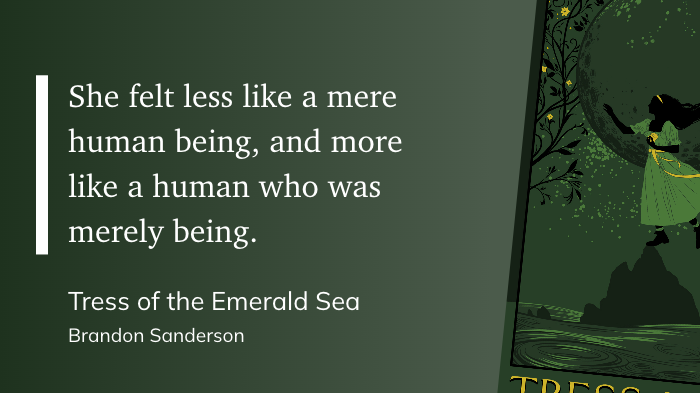
Book Details
Tress of the Emerald Sea by Brandon Sanderson
My rating: 5 of 5 stars
Series: The Cosmere
Genre: Fantasy, High Fantasy, Epic fantasy
Pages: 483 pages (Kindle)
Published: 1st January 2023 by Dragonsteel Books (Kickstarter) & 10th January 2023 by Tor Books (US Ebook)/Gollancz (UK Ebook)
What It’s About
Tress, a young girl, goes on an epic adventure to rescue her love. Along the way, she changes. For the better. Also, sandals with socks. We sail seas that aren’t really seas and meet tons of people who aren’t who they say they are. Heck, there’s even a dragon.
At the heart of it all, the book is the answer to this question: “What would happen if the princess had to save the prince?”
How I Discovered It
This is the first “secret project” Brandon Sanderson announced in early 2022. The entire “secret project” process has been a treat to watch. From the initial hook of learning Sanderson had written books in secret to seeing the project updates and the community that surrounds these novels has been a blast.
Thoughts
I honestly wasn’t sure about this book before I began reading it. With no clue what to expect, I dove in with an open mind. Moreso than almost any other Sanderson novel, I didn’t want to put it down.
What I Liked About It
The characters, as always. The story is told from Hoid’s perspective (if you don’t know who Hoid is, this one probably isn’t for you) which is refreshing and brilliant. The humor is perfect. Tress is a compelling female lead with a great development arc and so many of the other characters have great arcs, as well.
What I Didn’t Like About It
Only that I finished it so quickly. I would note that if you haven’t read many of the other Cosmere novels, you may miss out on a number of easter eggs and connections to the other worlds, characters, and storylines.
Who Would Like It?
Fans of Sanderson’s Cosmere books will likely be very happy with this book and the connections made within the story. If you haven’t read the books, I don’t know that you will enjoy the book as much. It’s certainly a good story and can stand on its own, but the Cosmere connections make it something special.
Quotes
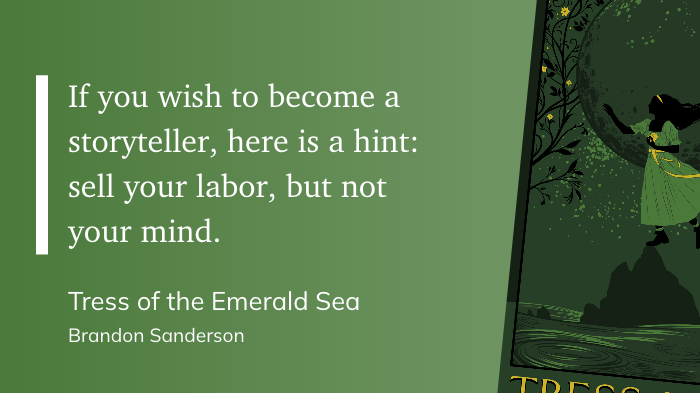
“If you wish to become a storyteller, here is a hint: sell your labor, but not your mind.”
Brandon Sanderson, Tress of the Emerald Sea
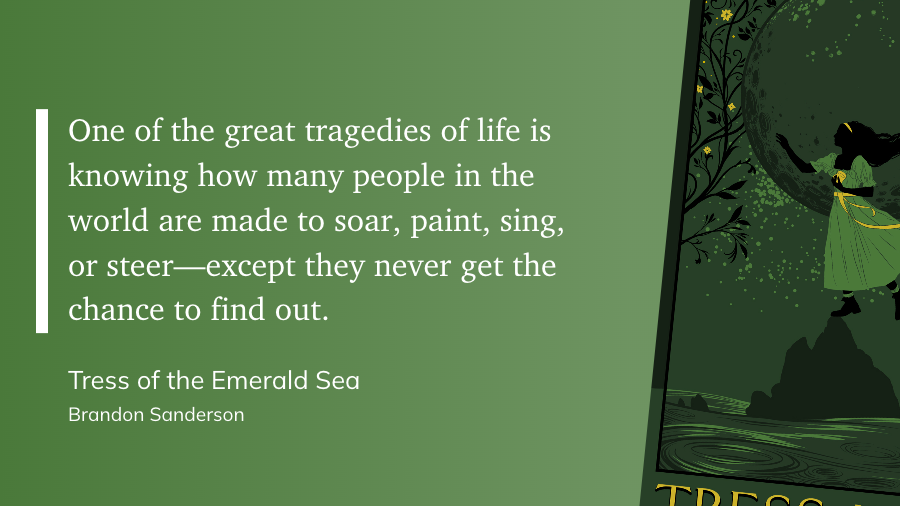
“One of the great tragedies of life is knowing how many people in the world are made to soar, paint, sing, or steer—except they never get the chance to find out.”
Brandon Sanderson, Tress of the Emerald Sea
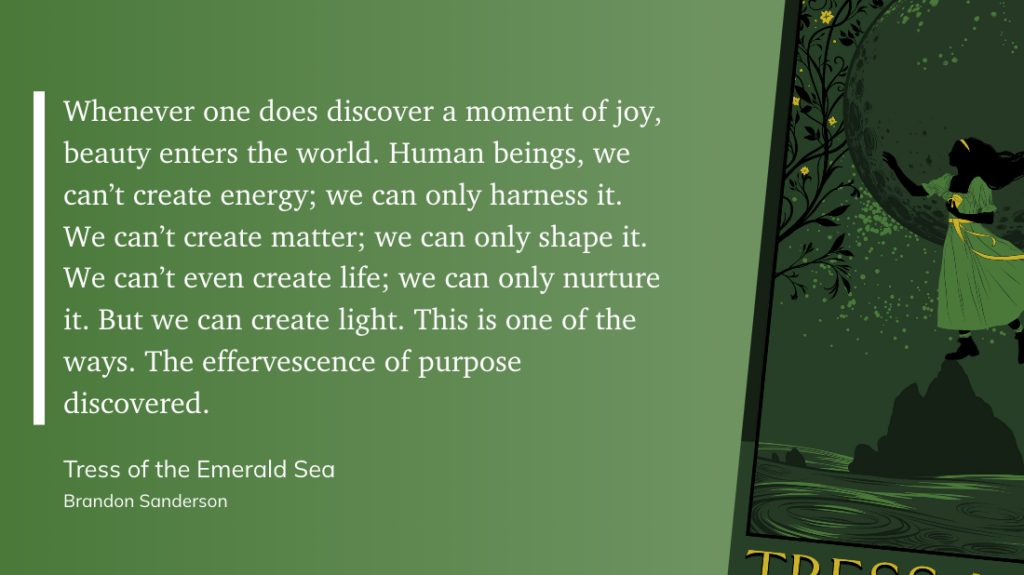
“Whenever one does discover a moment of joy, beauty enters the world. Human beings, we can’t create energy; we can only harness it. We can’t create matter; we can only shape it. We can’t even create life; we can only nurture it. But we can create light. This is one of the ways. The effervescence of purpose discovered.”
Brandon Sanderson, Tress of the Emerald Sea
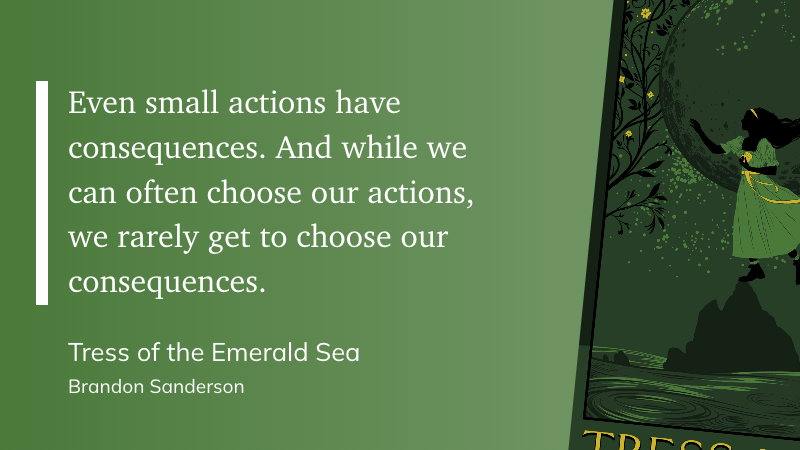
“Even small actions have consequences. And while we can often choose our actions, we rarely get to choose our consequences.”
Brandon Sanderson, Tress of the Emerald Sea
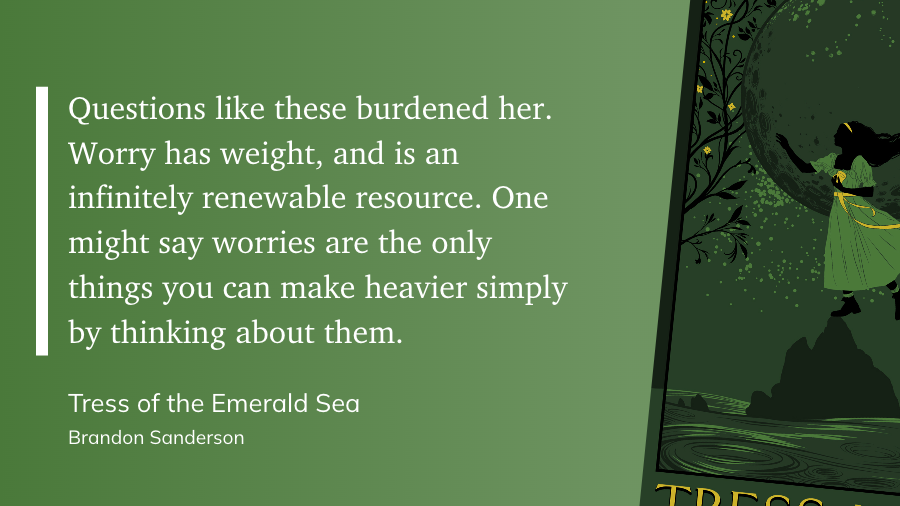
“Questions like these burdened her. Worry has weight, and is an infinitely renewable resource. One might say worries are the only things you can make heavier simply by thinking about them.”
Brandon Sanderson, Tress of the Emerald Sea
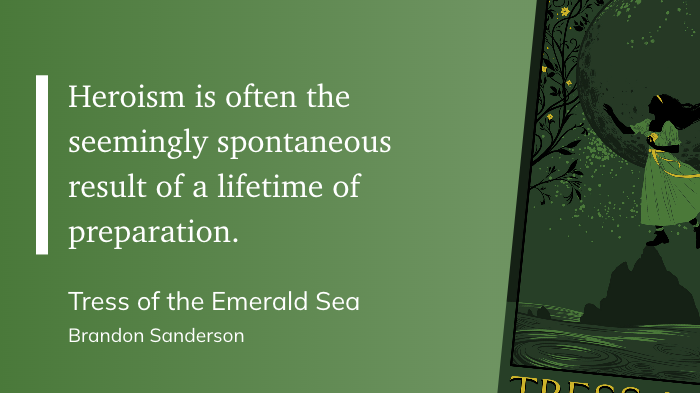
“Heroism is often the seemingly spontaneous result of a lifetime of preparation.”
Brandon Sanderson, Tress of the Emerald Sea
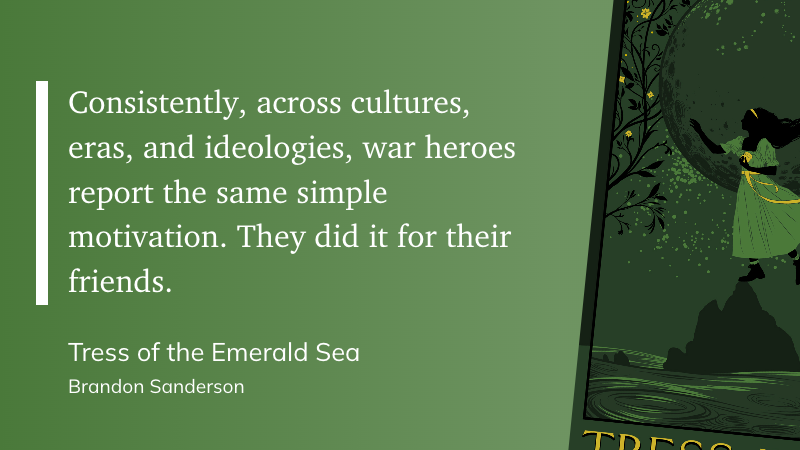
“Consistently, across cultures, eras, and ideologies, war heroes report the same simple motivation. They did it for their friends.”
Brandon Sanderson, Tress of the Emerald Sea
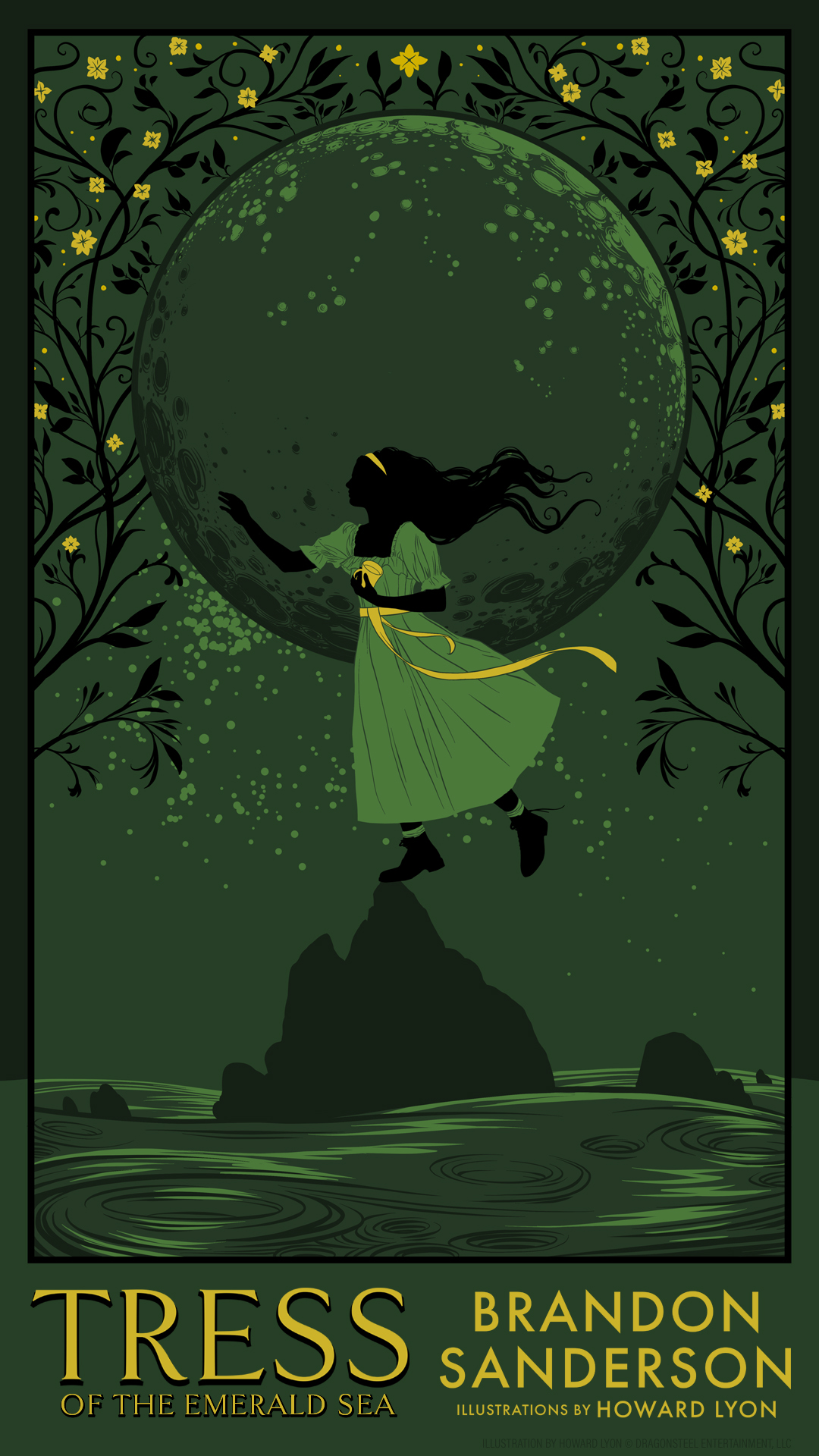

![The Well of Ascension[WELL OF ASCENSION][Paperback]](https://m.media-amazon.com/images/I/51SXsJWJOTL._SL160_.jpg)


